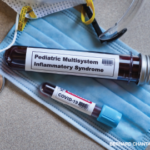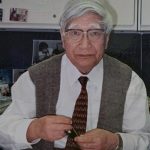 NEW ORLEANS—Many rheumatologists will recall their surprise when reading the results of the CANTOS trial in 2017. In the study, targeting the interleukin-1β innate immunity pathway with canakinumab yielded a significantly lower rate of recurrent cardiovascular events than placebo in patients with previous myocardial infarction (MI) and a high sensitivity C-reactive protein of 2 mg/L or more.1 How could an immunosuppressive medication have such a significant effect on lowering the frequency of cardiovascular events in high-risk patients? This question led to great interest in a 2023 PRSYM presentation titled Heart on Fire: Immunobiology of Cardiovascular Inflammation in (Some) Rheumatic Disease.
NEW ORLEANS—Many rheumatologists will recall their surprise when reading the results of the CANTOS trial in 2017. In the study, targeting the interleukin-1β innate immunity pathway with canakinumab yielded a significantly lower rate of recurrent cardiovascular events than placebo in patients with previous myocardial infarction (MI) and a high sensitivity C-reactive protein of 2 mg/L or more.1 How could an immunosuppressive medication have such a significant effect on lowering the frequency of cardiovascular events in high-risk patients? This question led to great interest in a 2023 PRSYM presentation titled Heart on Fire: Immunobiology of Cardiovascular Inflammation in (Some) Rheumatic Disease.
Heart Recovery
Mark Gorelik, MD, an assistant professor in the Division of Pediatric Rheumatology, Allergy and Immunology, Vagelos College of Physicians and Surgeons, Columbia University, New York, began the session by discussing the model of inflammation used to explain poor myocardial recovery in many patients after MI. Evidence in the literature supports the concept that adverse remodeling of contractile myocardium into fibrotic tissue in patients who have suffered an MI is driven by a multifaceted immune and inflammatory cascade.2 A series of cytokine, chemokine and leukocyte-driven responses after myocardial injury appears to lead to the myocardial fibrosis and chamber dilation seen in many patients.
Watkins, Beloucif and other researchers have noted that the epicardium, once thought to be a passive lining of the heart mostly useful for mechanical support, may play a regenerative role after MI.3,4 Just as the epicardium can give rise to fibroblasts, smooth muscle cells and endothelial cells in the heart during embryonic development, so too can epicardial activation in the post-MI period in adults result in re-expression of fetal gene programs that allow for the repair of injured myocardium.5
Dr. Gorelik explained that this situation makes sense when one realizes that immune-origin cells make up about 10% of the heart. One such immune-origin cell of interest is the neutrophil. In 2017, Horckmans et al. investigated the role this cell type plays in post-MI inflammation and repair. The authors found that, compared with control mice, neutrophil-depleted mice who underwent MI had worse cardiac function, more fibrosis and progressive heart failure.6 This finding may imply that therapies for post-MI care should carefully avoid reducing neutrophil-driven inflammation because doing so may impair cardiac remodeling.
Kawasaki Disease
Next, Dr. Gorelik discussed a disease that remains nearly as enigmatic in its cause and pathogenesis as it was when first reported in the 1960s: Kawasaki disease. Predominantly affecting children, this condition can lead to significant pathology of the coronary arteries, with giant coronary artery aneurysms considered the most potentially dangerous complication. Researchers have struggled to describe the chronology of histopathologic changes in the coronary arteries of patients with Kawasaki disease, perhaps because the features of this vasculitis can be heterogeneous from vessel to vessel within an individual patient and even within sections of the same vessel.
To explore further, Orenstein et al. used light and transmission electron microscopy to study autopsy specimens and explanted hearts from patients with Kawasaki disease. They found three distinct vascular processes: necrotizing arteritis, subacute/chronic vasculitis and luminal myofibroblastic proliferation. The authors note this vasculopathic scheme is different than those described in previous studies, and it may be helpful in better understanding the natural history of Kawasaki disease, particularly in patients who become critically ill.7
How could an immunosuppressive medication have such a significant effect on lowering the frequency of cardiovascular events in high-risk patients?
MIS-C
Given the importance the COVID-19 pandemic has played across all fields of medicine, Dr. Gorelik took some time to discuss the topic of multisystem inflammatory syndrome in children (MIS-C). MIS-C is a severe delayed hyperinflammatory syndrome that can occur in children and adolescents two to six weeks after infection with the SARS-CoV-2 virus. Because Kawasaki disease and MIS-C share many similar presenting symptoms and laboratory findings, some have speculated these conditions may exist on the same disease spectrum. This has led to research to better understand MIS-C and its pathogenesis.
Dr. Gorelik described a study from Spain. On autopsy of a young patient who died of presumed MIS-C, the SARS-CoV-2 spike protein was identified in colonic cells. This finding seems to support the hypothesis that the persistence of the virus in the gut of infected patients—even weeks after initial infection—may play a role in triggering the severe inflammatory cascade seen in patients with MIS-C.8
Other Research
Near the end of the lecture, Dr. Gorelik talked about some of his own research interests, including those related to follistatin-like protein 1 (FSTL-1). This secreted glycoprotein has been found to be overexpressed in several inflammatory diseases.
In 2013, Dr. Gorelik and colleagues investigated FSTL-1 levels in systemic juvenile idiopathic arthritis (sJIA) and macrophage activation syndrome (MAS). They were able to measure FSTL-1 levels at the time of presentation and after the treatment of patients with sJIA and MAS. The authors found that elevated pretreatment FSTL-1 levels in the serum of patients with sJIA are associated with dysregulated gene expression that can suggest occult MAS. These protein levels may serve as a predictor for determining which patients are likely to develop overt MAS.9
More recently, Dr. Gorelik and his collaborators have been examining the role FSTL-1 may play in promoting the development of coronary artery aneurysms in patients with Kawasaki disease. These investigations include comparing the model of Kawasaki disease in mice with FSTL-1 wild type expression and those with knock-out mutation for FSTL-1, as well as examining trends in mortality rates and cardiac inflammation between these sample groups.
In Sum
The session provided insight into the inflammatory components of the cardiovascular system. Much remains to be discovered on this topic, which clearly has significant implications for older adults and children with inflammatory rheumatic conditions who may be at risk of developing cardiovascular complications of their disease.
Jason Liebowitz, MD, completed his fellowship in rheumatology at Johns Hopkins University, Baltimore, where he also earned his medical degree. He is an assistant professor of medicine in the Division of Rheumatology at Columbia University Vagelos College of Physicians and Surgeons.
References
- Ridker PM, Everett BM, Thuren T, et al. Anti-inflammatory therapy with canakinumab for atherosclerotic disease. N Engl J Med. 2017 Sep;377(12):1119–1131.
- Frangogiannis NG. Regulation of the inflammatory response in cardiac repair. Circ Res. 2012 Jan;110(1):159–173.
- Watkins MW, LeWinter MM. Physiologic role of the normal pericardium. Annu Rev Med. 1993;44:171–180.
- Beloucif S, Takata M, Shimada M, et al. Influence of pericardial constraint on atrioventricular interactions. Am J Physiol. 1992 Jul;263(1 Pt 2):H125–H134.
- van Wijk B, Gunst QD, Moorman AFM, et al. Cardiac regeneration from activated epicardium. PLoS One. 2012;7(9):e44692.
- Horckmans M, Ring L, Duchene J, et al. Neutrophils orchestrate post-myocardial infarction healing by polarizing macrophages towards a reparative phenotype. Eur Heart J. 2017 Jan;38(3):187–197.
- Orenstein JM, Shulman ST, Fox LM, et al. Three linked vasculopathic processes characterize Kawasaki disease: a light and transmission electron microscopic study. PLoS One. 2012;7(6):e38998
- Mayordomo-Colunga J, Vivanco-Allende A, López-Alonso I, et al. SARS-CoV-2 spike protein in intestinal cells of a patient with coronavirus disease 2019 multisystem inflammatory syndrome. J Pediatr. 2022 Apr;243:214–218.e5.
- Gorelik M, Fall N, Altaye M, et al. Follistatin-like protein 1 and the ferritin/erythrocyte sedimentation rate ratio are potential biomarkers for dysregulated gene expression and macrophage activation syndrome in systemic juvenile idiopathic arthritis. J Rheumatol. 2013 Jul;40(7):1191–1199.




